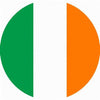Your cart is empty
20 ways to use Studio templates with preschoolers
October 01, 2018
Here are some practical ideas for using Boardmaker Studio Starter Templates to create fun activities for young children - the perfect tool to support language, literacy and social skills development for your preschoolers.
Hint:Make sure to search the Boardmaker Community to see if someone else has already created and shared an activity that you could use before starting from scratch! We've already created activities for each of the template types listed below. Join our JUMPSTARTS group on the Boardmaker Community to find them.4 ways to use the Book Templates
Books are a great way to provide interactive and fun literacy activities for young children. You can even print them out and send them home! The book templates allow you to create books on any topic and can easily supplement your classroom curriculum.
- Create a good manners or classroom rules book.
- Use digital images to create an “About Me” book for each student.
- Pick a topic and allow students to co-author a book together on an interactive white board.
- Create a book about a current event (e.g., holiday), place (e.g., Our school) or person (e.g., The President).
4 ways to use the Sequence Numbered Template
Sequencing is a very important concept for preschool children to develop, as it allows them to recognize patterns and understanding how a series of objects and/or events occur in a specific and logical order.
- Create a “hand washing” sequence, print, laminate and hang above the sink in the bathroom.
- Add the steps to a simple recipe, and have student mark each step as it is completed.
- Sequence the events in a story and discuss.
- Add the steps to a science experiment (e.g., planting a seed, rain cloud in a jar, etc.).
4 ways to use the Calendar Template
Although research has shown that most traditional calendar methods are not developmentally appropriate for preschoolers (Friedman, 2000), there are many beneficial ways to make these concepts more concrete for young children.
- Add classroom events and send home so that parents know what is going on in the classroom.
- Print a copy for each student so that they each have their own “monthly/day planner.”
- Create a countdown to a special event.
- Use calendars to teach vocabulary (e.g., month, day, year), patterns (e.g., days of the week) and sequencing (e.g., yesterday, today, tomorrow).
4 ways to use the One to One Template
Understanding the concept of one to one correspondence is a fundamental skill for both math and reading. This template will allow students to create any one to one pairing through exploration.
- Use vocabulary for matching pairs (e.g., horse/barn, fish/aquarium, etc.) to teach new concepts during a group activity. Have students vote as to whether the pairing is correct or not.
- Add symbols using curriculum related vocabulary.
- Have students count out loud as they create pairs on an interactive whiteboard.
- Create a “place” and “thing” activity where student will need to pair an object with its appropriate location (e.g., clothes/closet, cup/kitchen, toothbrush/bathroom, etc.).
4 ways to use the Stamping Template
Use the Boardmaker Studio Stamping templates to provide a structured way for students to create their own artwork while exploring new vocabulary and concepts. You provide the background…let the students add the stamps!
- Use a digital image of a field trip location and allow students to create a picture story of their experiences.
- Create a visual scene and then tell a story about it.
- Use the “bigger” and “smaller” buttons to reinforce the concept.
- Add symbols of items that do and don’t belong in the visual scene and discuss why they do or do not belong.
Recent Articles
- What can I try if I'm having difficulty connecting or reconnecting my iPhone to TD Phone? January 02, 2026
- What are the system requirements for the PCEye 5? November 05, 2025
- Can I use my PCEye with a Surface Pro? November 05, 2025
- How to unlock the TD Navio with a keyguard installed October 14, 2025
- How do I update iPadOS in my TD Navio, TD Pilot, or Speech Case? September 12, 2025
- What do I do if I forgot my TD Pilot / Speech Case / TD Navio passcode? September 11, 2025
- How can I use iPadOS shortcuts and TD Snap to send a text message? August 22, 2025
- I can connect to other networks, so why can't I connect to this one? August 01, 2025
- Launch Apple Shortcuts from TD Snap® (iPadOS only) version 1.37 and above July 30, 2025
- What is the Self-Service App on my Tobii Dynavox AAC device. SC Tablet, Speech case, Navio and TD Pilot. How to use it. June 26, 2025
Also in Support articles
Your opinion matters to us.
Please take a brief survey to help us improve.
Open success Modal












